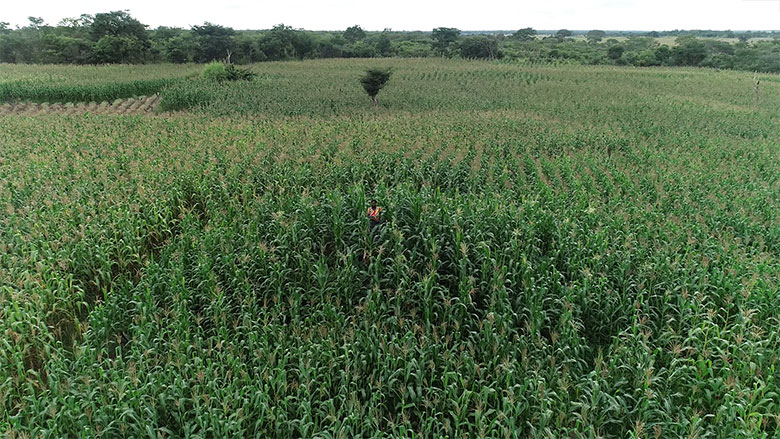LUSAKA, May 10, 2021—The moment Sofia Chansa, 49, received a $200 grant, her whole life changed.
With the money, she was able to expand her vegetable garden—once too small to support her family—to grow enough tomatoes and onions to sell in Tunduma border town. Her vegetable business was so lucrative that she was able to build a house for herself and her five children. She also built and stocked a small grocery store to serve her neighbors in her rural Kayambi Village. Then, there was the milestone she is most proud of since she finished the program; she connected her home to the national electricity grid.
“This is something I never imagined my entire life,” said Chansa. “I have now bought a radio and television set for the entertainment of my household.”
In addition to the grant, Chansa also received training and mentorship as a beneficiary of Supporting Women’s Livelihoods (SWL), a component of the Girl’s Education and Women Empowerment and Livelihood (GEWEL) project. SWL provides women ages 19-64 with opportunities to increase the productivity of their livelihoods, and their economic empowerment, through training, mentoring, peer support, productivity grants and help with setting up savings clubs.
Another beneficiary of the SWL is Karen Mwamba, a 45-year-old mother of three. She lives in Mulola village with her husband in a house that her parents left her when they died.
“I got married when I was 17-years-old, and like most men in the village my husband was a peasant farmer,” said Mubanga. “We survived from the little that we grew on our small piece of land. My husband and I were content with the kind of life we lived until we started having children. We had no means of feeding or paying their school fees.”
With the productive grant she received, Mwamba bought three goats and used the remainder of the money to buy rice, and began selling rice in her rural community. Like Sophia Chansa, Mwamba’s business grew, and she has been able to improve the quality of life for her family.

